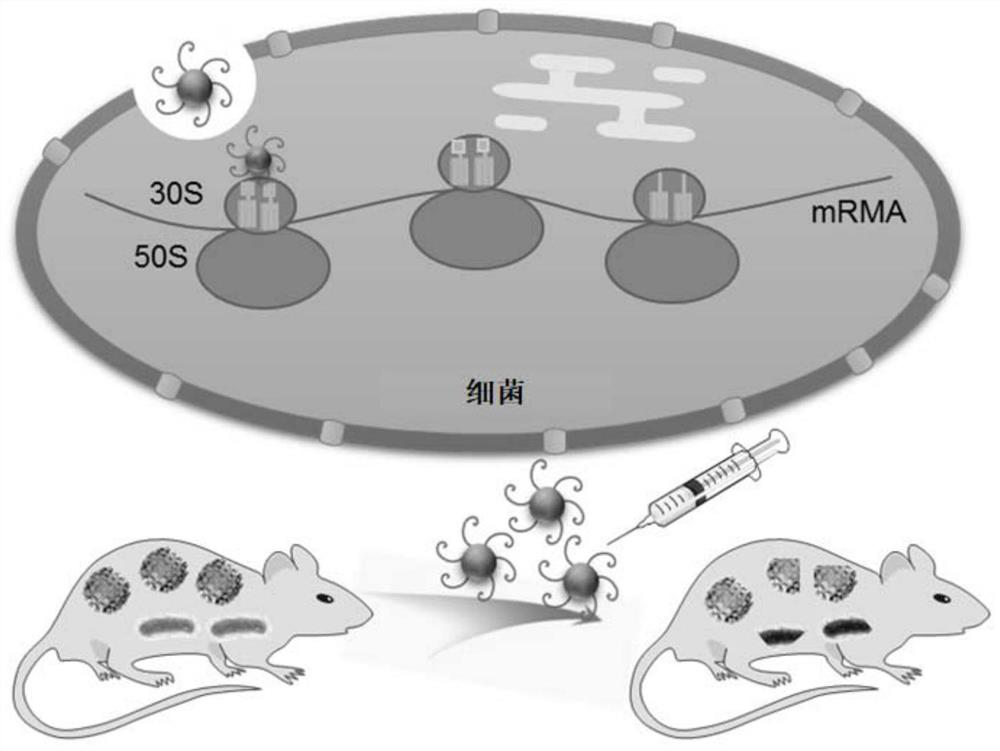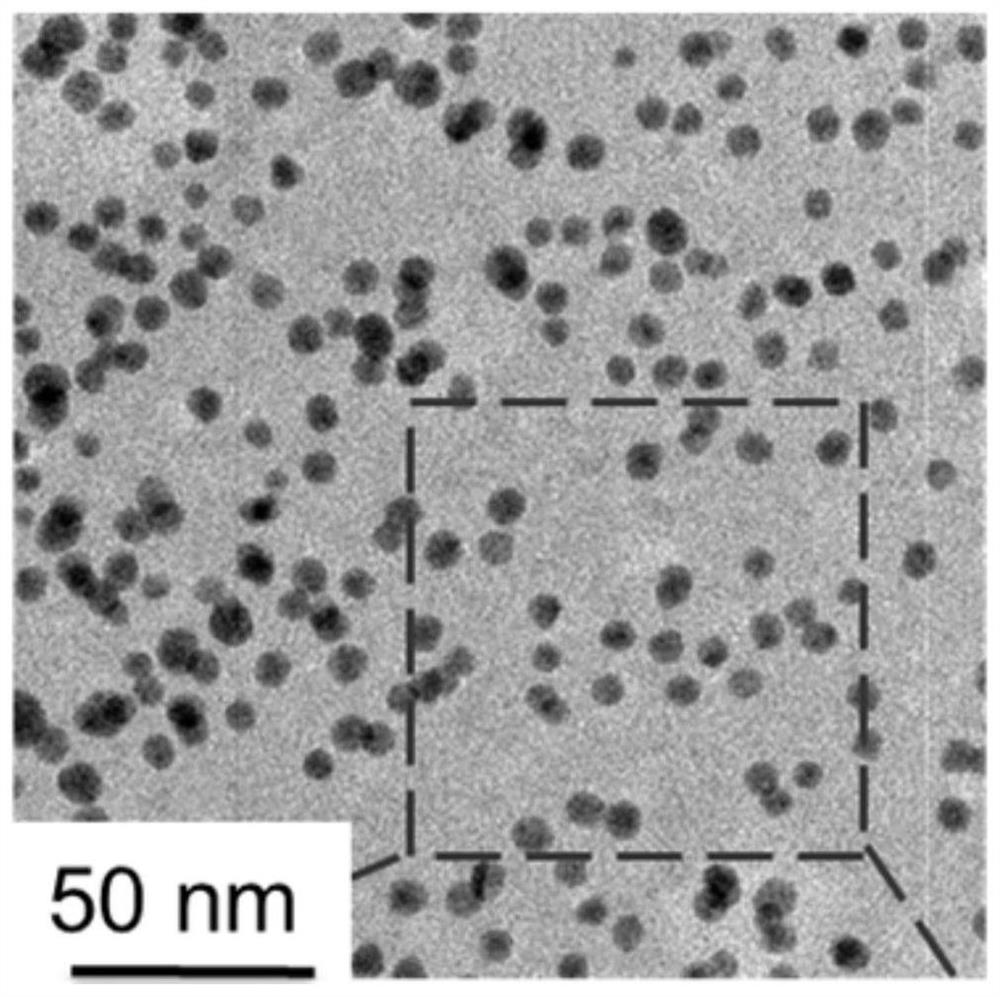Antibacterial nanomaterial, and preparation method and application thereof
A nanomaterial and gold nanoparticle technology, applied in the field of aminophenol-modified gold nanoparticles and their preparation, can solve the problems of unclear antibacterial target and mechanism, difficult circulation and storage in the body, difficult circulation and metabolism, etc. Excellent biocompatibility, clear antibacterial target, simple and fast preparation method
- Summary
- Abstract
- Description
- Claims
- Application Information
AI Technical Summary
Problems solved by technology
Method used
Image
Examples
Embodiment 1
[0073] The present embodiment provides an antibacterial nanomaterial, the antibacterial nanomaterial is gold nanoparticles (2AP_Au NPs) modified by o-aminophenol, and its specific preparation steps are as follows:
[0074] (1) In a round bottom flask, 0.05 mmol of chloroauric acid trihydrate and 0.05 mmol of o-aminophenol (2AP, molecular weight 109.13) were added to 10 mL of deionized water. Then 50 μL of triethylamine and 30 mg of Tween 80 were added, and mixed in an ice-water bath for 10 min until the molecules were completely dissolved.
[0075] (2) Dissolve 6 mg of sodium borohydride in 2 mL of deionized water, and add it dropwise to a round bottom flask under vigorous stirring at 1000 r / min. The color of the solution in the bottle immediately changes from colorless to brown. Keep this reaction condition for another reaction 2h.
[0076] (3) The obtained gold nanoparticles reduced by anthranilic acid were dialyzed for 24 h with a dialysis bag to remove untreated chemical ...
Embodiment 2
[0079] The present embodiment provides an antibacterial nanomaterial, the antibacterial nanomaterial is gold nanoparticles (3AP_Au NPs) modified by m-aminophenol, and its specific preparation steps are as follows:
[0080] (1) In a round bottom flask, add 0.05 mmol of chloroauric acid trihydrate and 0.05 mmol of m-aminophenol (3AP, molecular weight 109.13) into 10 mL of deionized water. Then 50 μL of triethylamine and 30 mg of Tween 80 were added, and mixed in an ice-water bath for 10 min until the molecules were completely dissolved.
[0081] Steps (2) and (3) are the same as the steps for preparing o-aminophenol-modified gold nanoparticles in Example 1.
[0082] The morphology of 3AP_Au NPs was characterized by transmission electron microscopy, and the observation results are shown in Figure 3(a) and Figure 3(b). Among them, Fig. 3 (a) is the morphological characterization diagram of gold nanoparticles when the scale is 50nm, and Fig. 3 (b) is the morphological characteriza...
Embodiment 3
[0084] The present embodiment provides an antibacterial nanomaterial, the antibacterial nanomaterial is gold nanoparticles (4AP_Au NPs) modified by p-aminophenol, and its specific preparation steps are as follows:
[0085] (1) In a round bottom flask, add 0.05 mmol of chloroauric acid trihydrate and 0.05 mmol of p-aminophenol (4AP, molecular weight 109.13) into 10 mL of deionized water. Then 50 μL of triethylamine and 30 mg of Tween 80 were added, and mixed in an ice-water bath for 10 min until the molecules were completely dissolved.
[0086] Steps (2) and (3) are the same as the steps for preparing o-aminophenol-modified gold nanoparticles in Example 1.
[0087] The morphology of 4AP_Au NPs was characterized by transmission electron microscopy, and the observation results are shown in Figure 4(a) and Figure 4(b). Wherein, Fig. 4(a) is a morphological characterization diagram of gold nanoparticles when the scale is 50nm, and Fig. 4(b) is a morphological characterization diag...
PUM
| Property | Measurement | Unit |
|---|---|---|
| Particle size | aaaaa | aaaaa |
Abstract
Description
Claims
Application Information
 Login to View More
Login to View More - R&D
- Intellectual Property
- Life Sciences
- Materials
- Tech Scout
- Unparalleled Data Quality
- Higher Quality Content
- 60% Fewer Hallucinations
Browse by: Latest US Patents, China's latest patents, Technical Efficacy Thesaurus, Application Domain, Technology Topic, Popular Technical Reports.
© 2025 PatSnap. All rights reserved.Legal|Privacy policy|Modern Slavery Act Transparency Statement|Sitemap|About US| Contact US: help@patsnap.com



